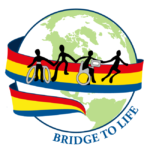- Initial screening process
- If your child fits our eligibility criteria, contact The Bridge School via email at admissions@bridgeschool.org or by phone at (650) 696-7295.
- One of our Directors will contact you to discuss our program, to describe anticipated classroom openings, and to learn about your child.
- Based on that conversation, if we determine that your child may meet our eligibility criteria and potentially fit our anticipated classroom opening(s), a site visit may be scheduled.
- Site visit screening
- After initial screening, family members and school district representatives may be asked to accompany your child for a site visit to The Bridge School. The site visit provides an opportunity for you to meet with our Directors to discuss your child’s educational needs relative to our school program and our anticipated classroom opening.
- This visit takes place during school hours. You and your child will be able to observe our classroom programs in action. Your child may be encouraged to briefly participate in an ongoing classroom activity and/or interact with our students and staff.
- Following this site visit, if it is further determined that your child is eligible and fits our classroom configurations, you will be invited to submit a full application. At that time we will provide the application form to you.
- Formal application
- Submit a full application for placement at The Bridge School. This includes the following:
- A completed Application Form
- An “Exchange of Information” form signed by parent or legal guardian
- Copies of educational records and other relevant reports
- Video recordings (CD, DVD, flashdrive) demonstrating how the child interacts and communicates with others.
- Submit a full application for placement at The Bridge School. This includes the following:
Your video recording does not have to be professionally shot. We have included some tips for capturing useful video information that will be used to help determine your child’s eligibility for placement at The Bridge School.
Recommended Content of Application Video
- Please provide video footage that is recent (within past month or two) and represents current communication AND new or emerging communication abilities.
- Focus on activities that are familiar to your child.
- The video should include the child engaged in interactions with a variety of his/her most skilled and favorite communication partners.
- If your child uses any assistive technology for communication or mobility, include examples of your child engaged in activities that demonstrate their use.
- Include examples of activities that you think are important for us to consider when evaluating your child for enrollment at The Bridge School.
- As much as possible, when capturing the video try to include both your child and the communication partner(s).
- If appropriate, include examples of your child engaging in instructionally related activities.
- Additional suggestions: include clips of your child interacting with various family members during daily routines; you and your child engaged in games that are fun for both of you, songs and favorite activities, examples of activities that bring out a range of your child’s natural communication abilities (vocalizations, gestures, body movements), favorite people playing with your child and having fun, activities with your child’s favorite toys, books, and other objects.


